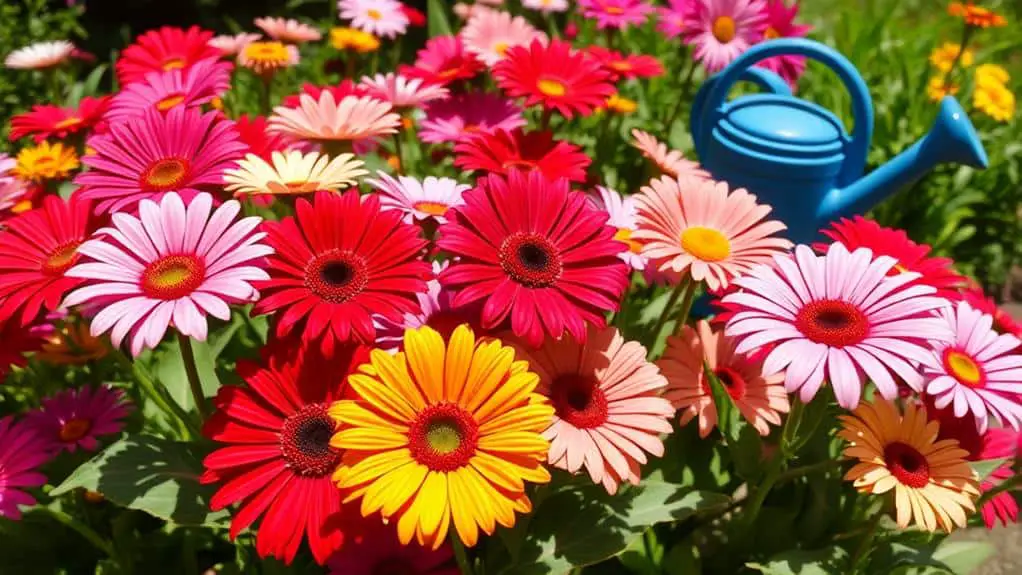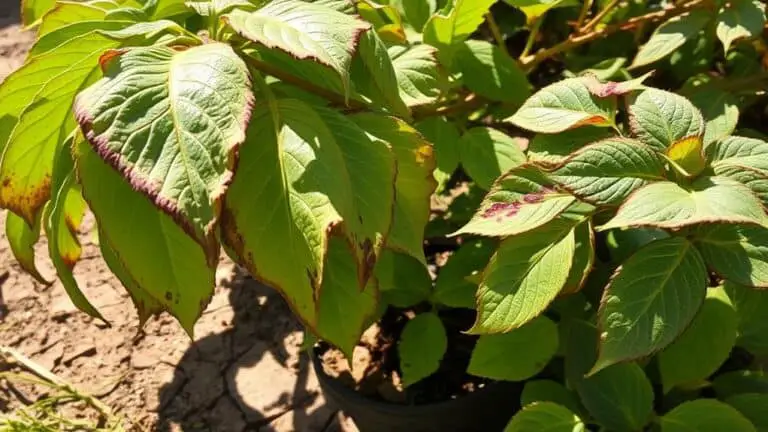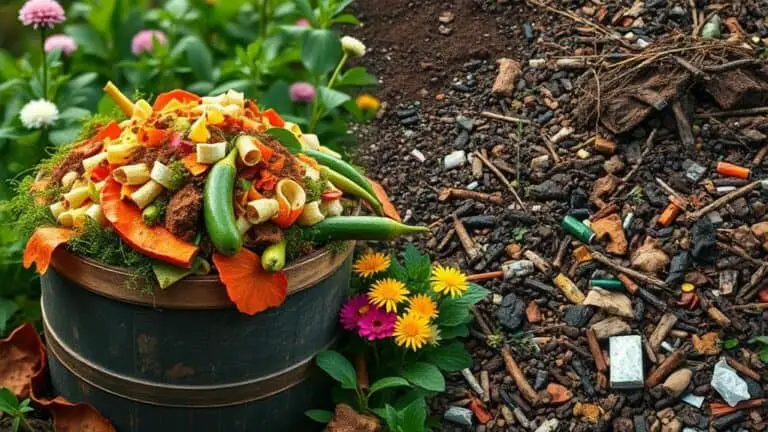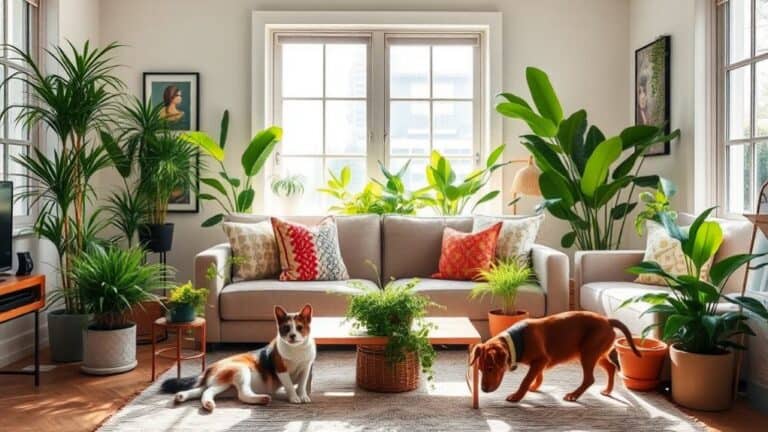Tips For Gerbera Daisy To Bloom All Summer Long
I've found that maintaining vibrant Gerbera daisies all summer isn't as tricky as it might seem, but it does require some attention to detail. The key lies in providing the right amount of sunlight, choosing a suitable potting mix, and following a consistent care routine. It's not just about watering and feeding—there's more to it than that. For instance, deadheading spent flowers and pruning can greatly impact their blooming. But before we get into those finer points, let's start with the basics of light and soil requirements.
Light Requirements

To guarantee your Gerbera daisies bloom beautifully, you need to pay close attention to their light requirements.
Gerberas thrive with full sun, needing at least six hours of direct sunlight each day. Morning sun is especially beneficial, as it helps the flowers open fully. In hotter climates, afternoon shade can protect them from excessive heat.
If you notice sparse blooms, consider relocating your plants to sunnier spots. While they can grow in partial shade, expect fewer flowers. Balanced light exposure is key.
Be cautious of too much direct sunlight, which can harm foliage and flowers. In extremely hot regions, filtered light or partial cover will help your Gerberas stay healthy and keep blooming.
Soil and Potting Mix
When it comes to soil and potting mix for your Gerbera daisies, choosing the right components is essential.
I recommend going for a fast-draining potting mix with organic matter and perlite to guarantee good drainage and aeration.
Make certain your pot has drainage holes and plant the crown slightly above soil level to keep the stems dry and healthy.
Optimal Soil Composition
Understanding the ideal soil composition is essential for the healthy blooming of gerbera daisies. These beautiful flowers thrive in a fast-draining potting mix enriched with organic matter and perlite. This prime soil composition guarantees the plants get the nutrients they need while avoiding root rot.
Heavy clay soils should be avoided because they retain too much moisture, which can harm the roots. Aim for a soil pH between 6.0 and 6.8 to promote the best nutrient uptake.
When planting, make sure the crown of the gerbera daisy sits slightly above the soil level to prevent stem rot. Also, replanting every few years keeps the soil nutrient-rich and supports healthy growth.
Drainage and Aeration
Proper drainage and aeration are essential for guaranteeing that gerbera daisies bloom beautifully. They thrive in well-drained soil, so use a fast-draining potting mix with organic matter and perlite. Avoid heavy clay soils, as they hold too much moisture and can lead to root rot. When potting, pick containers that are 2 inches wider than the current ones and have drainage holes for proper aeration. Water deeply only when the top inch of soil is dry, following a dry-wet-dry-wet cycle. Check for root diseases when repotting every 1-2 years to guarantee healthy growth.
| Problem | Solution | Tips |
|---|---|---|
| Root rot | Fast-draining soil | Use perlite in the mix |
| Heavy clay soil | Avoid using | Choose well-drained options |
| Waterlogging | Proper pot drainage | Guarantee drainage holes |
| Poor aeration | Wider containers | 2 inches wider when repotting |
| Root diseases | Regular checks | Every 1-2 years when repotting |
Nutrient-Rich Amendments
A nutrient-rich soil mix is crucial for vibrant and healthy Gerbera daisies. To achieve this, use a fast-draining potting mix with organic matter and perlite. This combination prevents waterlogging and keeps the roots healthy.
Incorporate nutrient-rich amendments like compost to boost nutrient content and moisture retention. For ideal growth, use a balanced fertilizer with a low middle number, such as 15-7-15, every 4-6 weeks. This helps enhance blooming and overall plant health.
Regularly test the soil pH, aiming to maintain levels between 6.0 and 6.5, ensuring nutrients are available. During planting, consider controlled-release fertilizers for a steady nutrient supply, supporting healthy growth and extended blooming all summer long.
Watering Techniques

One key to helping Gerbera daisies thrive is mastering the art of watering them correctly. Proper watering techniques are essential for maintaining soil moisture and ensuring healthy Gerbera blooms. Here's what I've learned:
- Water thoroughly, then let the top inch of soil dry before the next session. This prevents waterlogging and root rot.
- Follow a dry-wet-dry-wet cycle to keep soil evenly moist without becoming soggy.
- Monitor soil moisture regularly. Drooping flowers might mean overwatering, while dry soil can cause wilting.
- Water deeply once a week, adjusting based on weather and pot size to keep moisture levels consistent.
Fertilization Schedules
Now let's talk about fertilization schedules for your Gerbera daisies.
I recommend fertilizing them every 4-6 weeks during the growing season with a balanced fertilizer like 15-7-15 to help them bloom beautifully.
Also, using a controlled-release fertilizer can give them a consistent supply of nutrients, making sure they stay healthy and vibrant.
Regular Fertilizer Application
To guarantee your Gerbera daisies bloom beautifully, it's crucial to establish a regular fertilization schedule. Regular fertilizer application is key to giving your daisies the nutrients they need.
Every two weeks during the growing season, use a water-soluble fertilizer, like 15-7-15 or 12-2-12, to promote blooming. Apply controlled-release fertilizers every 4-6 weeks for steady nutrient supply.
Here's what I do:
- Water first: Always water the plants before fertilizing to minimize root stress.
- Follow the rates: Stick to the recommended application rates to avoid over-fertilization.
- Incorporate compost: Add organic compost monthly during summer to improve soil level and structure.
- Stay consistent: Keep up with the schedule to guarantee lush and vibrant blooms.
These steps will help your Gerbera daisies thrive all summer long!
Balanced Nutrient Ratios
Achieving the perfect balance of nutrients is essential for vibrant and continuous blooming in Gerbera daisies. To keep your daisies flourishing, fertilize gerbera daisies every two weeks with a water-soluble fertilizer, guaranteeing a low middle number ratio like 15-7-15 or 12-2-12. This encourages blooming over leaf growth.
During the growing season, use controlled-release fertilizers for consistent nutrient delivery. Additionally, incorporate organic compost monthly to enrich the soil and support continuous flowering.
Keep an eye out for yellowing leaves as a sign of over-fertilization. Adjust how often you fertilize based on the plant's growth cycle, reducing it during rest periods between blooms.
This balanced nutrient ratio approach guarantees healthy, happy flowers all summer.
Deadheading Flowers

Deadheading flowers is an essential practice for keeping your Gerbera daisies vibrant and blooming throughout the season. By removing dead or faded flower stems, you can encourage new blooms and redirect the plant's energy into creating more flowers.
Here's how you can do it effectively:
- Trim dead or faded flower stems close to the base, just above the first leaf.
- Deadhead every few days during peak growing seasons, especially in summer.
- Regular deadheading minimizes mold and disease risk from decaying flowers.
- Consistent deadheading helps maintain the plant's aesthetic appeal.
Pruning Methods
Pruning your Gerbera daisies effectively boosts their overall health and encourages prolific blooming. Use sharp bypass shears or floral scissors for clean cuts when deadheading wilted flowers. Trim spent blooms down to the first leaf. This conserves the plant's energy for new growth. Regularly remove faded leaves and stems at their base to improve airflow. This helps direct nutrients to healthy foliage and flowers. Prune leggy growth in early spring to promote bushiness. This creates a healthier plant structure for summer blooms. Always water the plant before pruning to reduce stress and enhance recovery. Here's a handy table for quick reference:
| Task | Tools Needed | Timing |
|---|---|---|
| Deadhead | Bypass shears/floral scissors | Throughout summer |
| Remove faded leaves | Bypass shears/floral scissors | Regularly |
| Prune leggy growth | Bypass shears/floral scissors | Early spring |
| Water before pruning | Watering can | Before pruning |
| Trim spent blooms | Bypass shears/floral scissors | Throughout summer |
Seed Germination

Germination is the critical first step in growing vibrant Gerbera daisies. To guarantee successful seed germination and new growth, start by sowing Gerbera seeds indoors 8-10 weeks before the last frost.
Here's a simple guide:
- Use a sterile potting mix, lightly pressing seeds into the soil.
- Cover them for light exposure, as Gerbera seeds need light to germinate.
- Maintain a temperature of around 70°F and keep the soil lightly moist.
- Cover the seed tray with plastic to retain moisture until germination, which takes 10-28 days.
Once the seeds germinate, move the seedlings to a bright light location.
Transplant them into 4-inch pots after they develop two sets of true leaves. This careful management leads to vibrant blooms all summer.
Plant Propagation
After successfully germinating Gerbera daisy seeds, the next step in guaranteeing a garden full of vibrant blooms is mastering plant propagation.
To propagate Gerbera daisies, start by dividing clumps with multiple crowns in the spring. Use sharp tools for clean separation and remove any dead roots and leaves.
For seedlings, once they've two sets of true leaves, transplant them into 4-inch pots. This gives them ample space for growth.
Maintain a warm environment, around 70°F, and keep the soil lightly moist. Cover the seeds with plastic to retain moisture during germination.
Remember, for patented varieties, it's best to purchase them from garden centers to guarantee quality and comply with patent laws.
Happy gardening!
Overwintering Tips

When winter approaches, safeguarding your Gerbera daisies from the cold becomes essential to secure they bloom vibrantly come spring.
Here are some overwintering tips to help you:
- Move Indoors: Before frost hits, bring your potted Gerberas inside, especially if temperatures drop below 40°F.
- Cool, Frost-Free Location: Keep them in a cool spot with some light to prevent dormancy.
- Reduce Watering: Allow the soil to dry out between waterings to prevent root rot. Water only when the top inch of soil is dry.
- Use Mulch: In warmer climates, mulch the soil around outdoor Gerberas to protect them from harsh conditions.
Once spring arrives and temperatures exceed 45°F, gradually re-acclimate your Gerberas to full sun to secure healthy growth.
Pest and Disease Control
As the winter chill fades and you've successfully protected your Gerbera daisies, it's time to focus on keeping them healthy and free from pests and diseases.
Regularly inspect your gerberas for pest infestations like whiteflies, aphids, and spider mites. These pests can really hinder blooming. For treatment, use neem oil or insecticidal soap, applying sprays in the evening to safeguard beneficial pollinators.
Prevent powdery mildew and moisture-related diseases by avoiding wet foliage during watering and ensuring good air circulation. Remove any affected leaves or flowers right away to stop disease spread.
Make sure your gerberas are in well-drained soil to avoid root rot and other moisture-related diseases. Following these steps helps keep your daisies blooming beautifully all summer long.
Frequently Asked Questions
How Do You Keep Gerbera Daisies Blooming All Summer?
To keep my gerbera daisies blooming all summer, I guarantee they get six hours of sunlight exposure, use proper watering techniques, and let the top inch of soil dry out. I also deadhead regularly and fertilize every two weeks.
How to Make Gerbera Daisies Bloom More?
To make gerbera daisies bloom more, I guarantee they get six hours of sunlight, use a 15-7-15 fertilizer every two weeks, and follow a dry-wet-dry watering cycle. These steps really boost their flowering potential.
Do Gerbera Daisies Flower All Summer Long?
Gerbera daisy varieties can flower all summer long, but climate impact and soil requirements play essential roles. In my experience, ensuring ideal sunlight, proper soil conditions, and consistent care can help these beauties thrive throughout the season.
How to Make Gerbera Daisies Last Longer?
To make Gerbera daisies last longer, I focus on their soil requirements, watering techniques, and pest control. I use well-draining soil, water them deeply but infrequently, and regularly check for pests to keep them healthy.
Conclusion
With these simple tips, I'm sure your Gerbera daisies will bloom beautifully all summer long. Just remember to give them plenty of sunlight, use a good potting mix, and water them just right. Don't forget to fertilize, deadhead, and keep an eye out for pests. You've got this! Gardening is all about patience and care, and with a little effort, your daisies will reward you with stunning blooms. Happy gardening!







